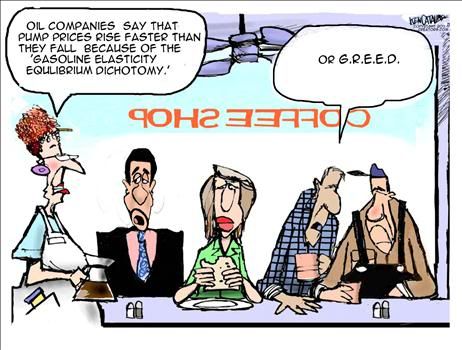Thursday, March 20, 2014
Supply
Thursday, March 13, 2014
Inelastic vs. Elastic

This week has been about elastic products and inelastic products. To be an elastic product, the change in price has to result in a relatively large change in quantity demanded. As for inelastic products, the change in price has to result in a relatively small change in quantity demanded. It disturbs me a bit how the economy can manipulate the prices of an inelastic product, and no matter the price, it is still a valuable necessity and the community is influenced to buy it. But I suppose that's how the economy gains its money.
Thursday, March 6, 2014
Demand Curves

This week, or I should say, the past two days have concerned demand and change. Demand is inversely related, so that when the cost of an item increases, the amount of people who will purchase that item decreases. I'm positive we have all seen this, whether it be a pair of shoes that could not possibly be priced at 100 dollars or a video game that costs 200 dollars for just the cd version. We have all turned away a product, simply because of the price. I believe this to be a continuing factor in all our lives, as we will continue to compare and contrast prices and see which most benefits us. Again, we buy in our own self-interest and consumers are really what control the economy. The choice of a company lowering or raising the price of a product is entirely up to the consumers.
Subscribe to:
Comments (Atom)
